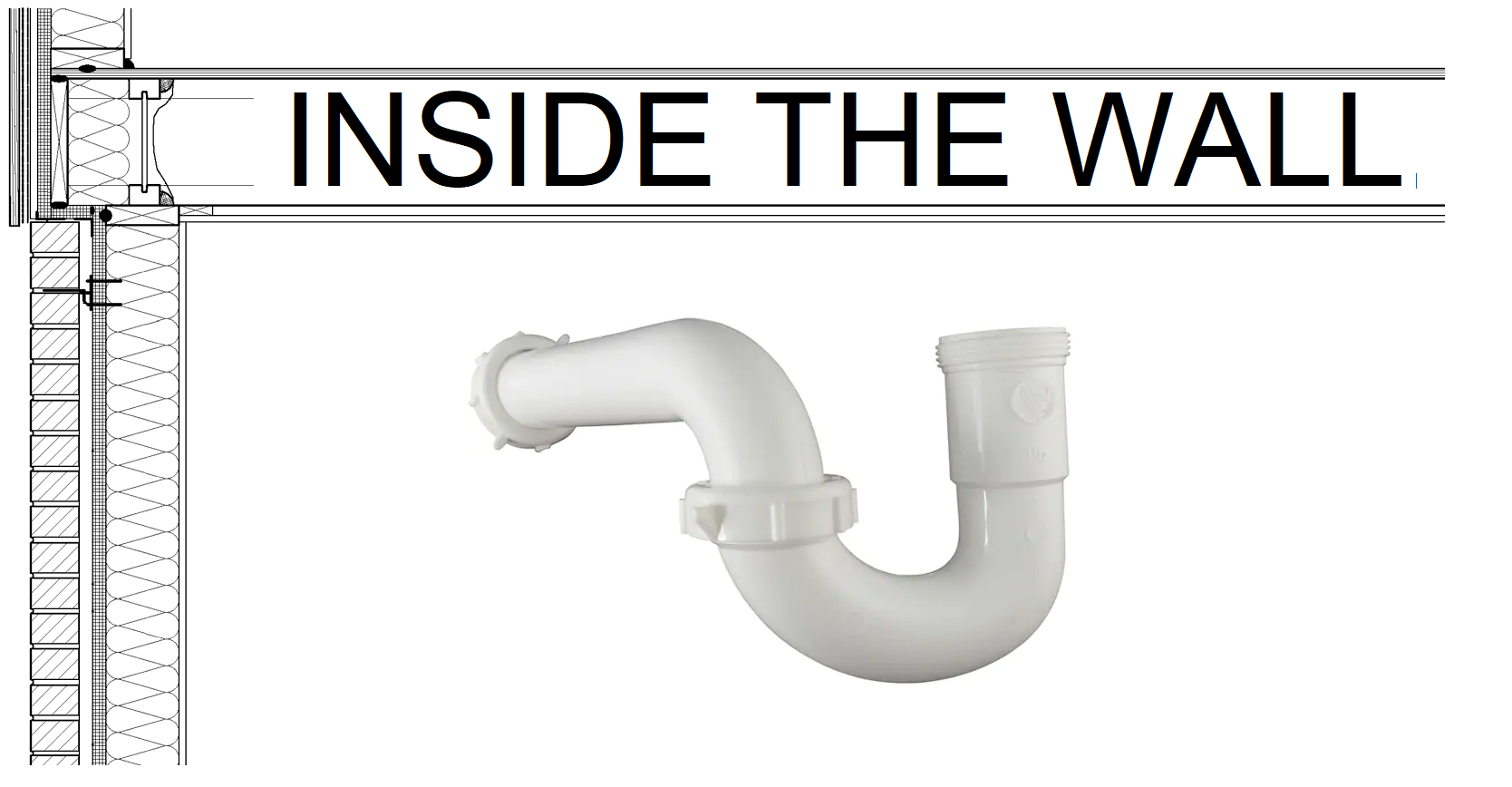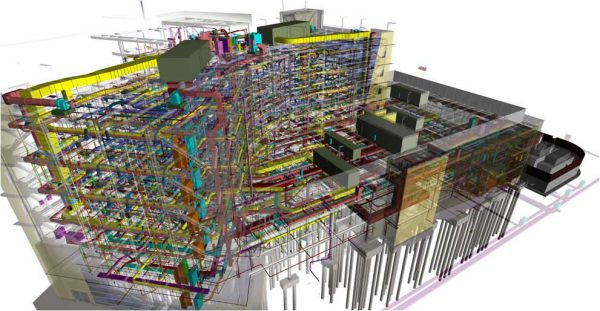In this month’s edition of “Inside the Wall” we will turn our attention to p-traps. P-traps are a staple here at Forward Engineers, required in every project we work on. There isn’t a week that goes by without us placing a p-trap in a project. You have probably seen one in your home under the sink in your bathroom or kitchen, but it may surprise you to know that there is one in every drain in your house because it’s required by the plumbing code. In some cases, p-traps are even built into the fixture, like a toilet. Let’s look at what they are and why they have such a name.
Have you ever noticed that you cannot smell sewer in your home? This may sound strange considering you never smell sewer in anyone’s home, provided nothing is broken, but this is by design. When organic material decomposes it gives off gases that contain methane and carbon dioxide. Among other things, this gas mixture is both dangerous and smells bad. P-traps prevent this gas mixture from coming out of your sewer and back into your house by providing a water seal. Traps for plumbing were invented by Alex Cumming in 1775 and modified by Thomas Crapper (yes, you read that correctly) in 1880. Crapper’s new design included a U bend which did not clog as badly as the original S bend and therefore did not need an overflow.
P-traps get their name from their shape, they look like a sideways letter p. This shape is very important to their functionality. The p-trap keeps water in its dip, sealing off the pipe entrance from the rest of the sewer. This water stays in the dip between usages of the drain forming an airtight barrier that prevents the gases inside your sewer system from flowing back up and into your house. They are imperative to a proper plumbing system; without them there would be noxious gases flowing back into your house causing health problems and making your home uninhabitable. Their only drawback is that in order to properly function they need water in them, but water evaporates. In order to keep the p-traps in your house functioning properly it’s important that lightly used sinks and toilets get used on a semi regular basis to prevent smells and drain flies from entering your house. Trap guards are another solution to seldom used fixtures but that’s another post…
Nearly everyone has dealt with an annoying clog in their house either in the toilet, shower or sink. They take time to clear them out and often require things like a plunger, chemicals like Drano or a snake to fully get rid of them. While we may bemoan the process of having to clear clogs the fact that we can do it with relative ease is thanks to p-traps. P-traps are designed to make the clog happen at the fixture rather than downstream in other parts of the sewer system. This prevents a clog caused by your toilet from backing up water into your sink, shower and any other part of your house. Clogs in your sewer system away from fixtures are much harder to clean out and often require professional help from a plumber. At their worst they can require sections of the plumbing system to be ripped up and worked on. So, remember the next time you must unclog a sink or plunge a toilet that it could be a lot worse and significantly more expensive.
At Forward Engineers, we seek to not only be a design and consulting firm but to also educate our clients about engineering technology. While doing so, we inevitably refresh our own knowledge and sometimes even learn something ourselves. If you are seeking to work with an engineering firm that is client-centered and strives to provides services that are on time, on budget and exceed expectations, please contact us. We would love to work with you on your next project!




